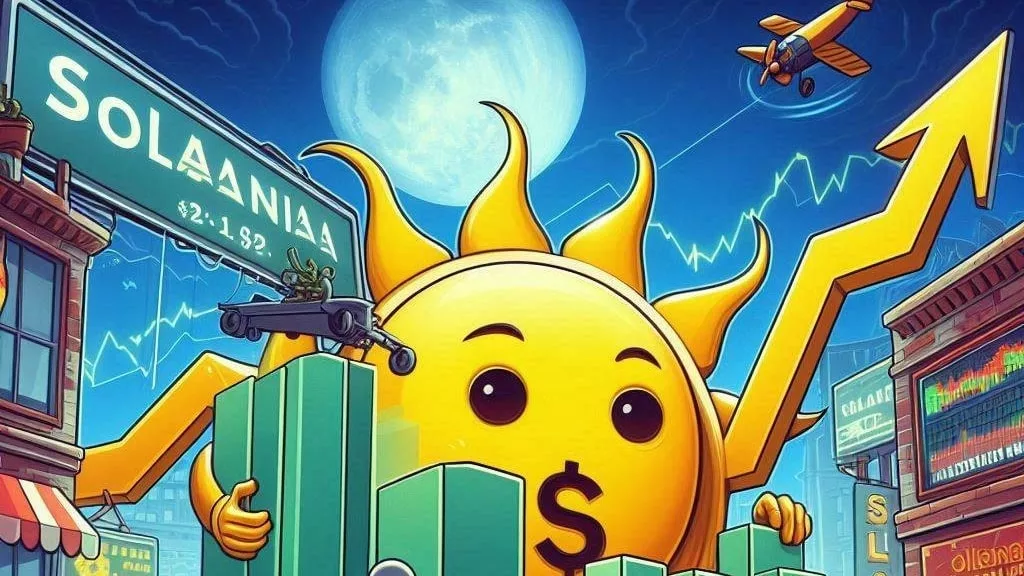
Bitcoin’s price has been experiencing significant fluctuations recently, with a potential technical signal fueling mixed reactions in the market. The 50-day moving average of Bitcoin is nearing a crossover below the 200-day moving average, a phenomenon commonly referred to as the “Death Cross.” This bearish signal has historically been associated with price declines, but not always. Traders are now faced with the question of whether this pattern will be a warning sign or just another false alarm.
The Death Cross: What Is It?
A Death Cross occurs when the 50-day moving average (MA) drops below the 200-day MA. Typically, it is considered a sign of a potential downtrend, as it indicates that short-term momentum is weakening in relation to long-term price trends. In the past, such crossovers have been followed by notable price declines, including the 2022 Death Cross, which triggered a significant price drop of nearly 20%. However, history also shows that this pattern doesn’t always lead to catastrophic losses, and some have even proven to be false signals.
Historical Context: Death Crosses and Golden Crosses
While the Death Cross is often seen as a warning sign, Bitcoin has also experienced many Golden Crosses, which occur when the 50-day moving average crosses above the 200-day moving average. Golden Crosses are typically considered bullish signals, often followed by sharp price rallies.
Bitcoin’s market history shows that the formation of both Death Crosses and Golden Crosses has been a mixed bag. For instance, after the bear market bottom in 2022, Bitcoin saw three Golden Crosses and two Death Crosses. The first Golden Cross after the collapse of FTX came when Bitcoin was trading around $21,000, and this led to a strong uptrend that continued for months.
In contrast, the Death Cross that formed in September 2023 at around $25,000 was initially concerning for traders but turned out to be a false signal as Bitcoin quickly bounced back, forming another Golden Cross at $35,000 and continuing its upward momentum.
In August 2024, another Death Cross appeared while Bitcoin was trading at $61,000. Despite initial fears, Bitcoin once again continued to rise, disproving the assumption that every Death Cross leads to extended downturns. These mixed outcomes show that while a Death Cross can be a signal of weakness, it doesn’t always lead to prolonged downtrends.
The Current Situation: Will It Lead to a Downtrend?
The big question now is whether this upcoming Death Cross will follow the same path as the 2022 bear market or be another false signal like the one seen in 2023. Some market participants are cautious, while others remain optimistic, pointing to Bitcoin’s strong historical performance and its ability to rebound quickly after similar signals in the past.
Tony “The Bull,” a prominent crypto trader, has warned of the potential for Bitcoin to enter a downtrend following the crossover, but he also acknowledges that Death Crosses have often been short-lived. In some cases, they have led to only brief corrections, after which Bitcoin resumed its upward trend. With the market currently trading around $81,897, Bitcoin is down by 6% in the last 24 hours, but it is still a long way from confirming a bearish trend.
Looking Ahead: The Importance of Market Sentiment
Despite the looming Death Cross, Bitcoin’s long-term outlook will depend heavily on market sentiment and external factors. With the market cap still holding strong at around $1.7 trillion, Bitcoin’s price could see a rebound if investor confidence is restored.
Overall, while the Death Cross may cause concern among some traders, history suggests that it’s not always a reliable indicator of a long-term price drop. Bitcoin’s resilience and its ability to bounce back from technical signals like the Death Cross should not be underestimated. Traders and investors will need to remain vigilant as the market continues to evolve.




Get the latest Crypto & Blockchain News in your inbox.